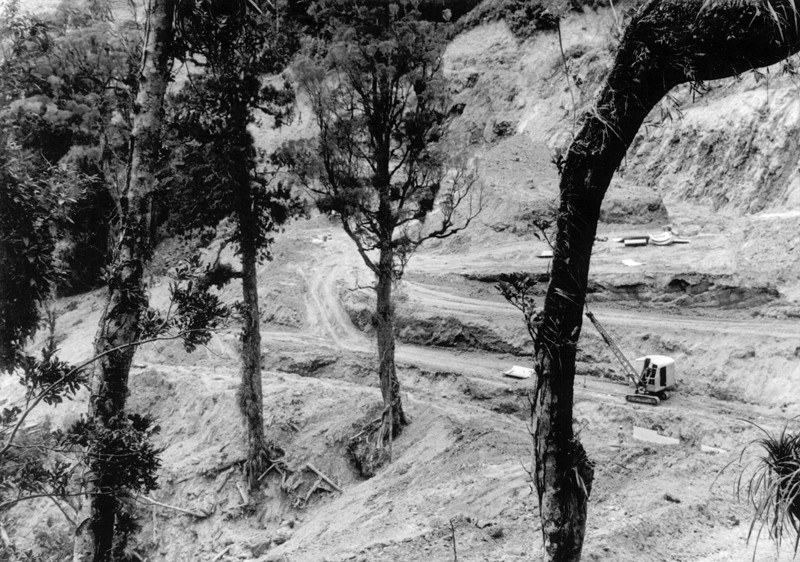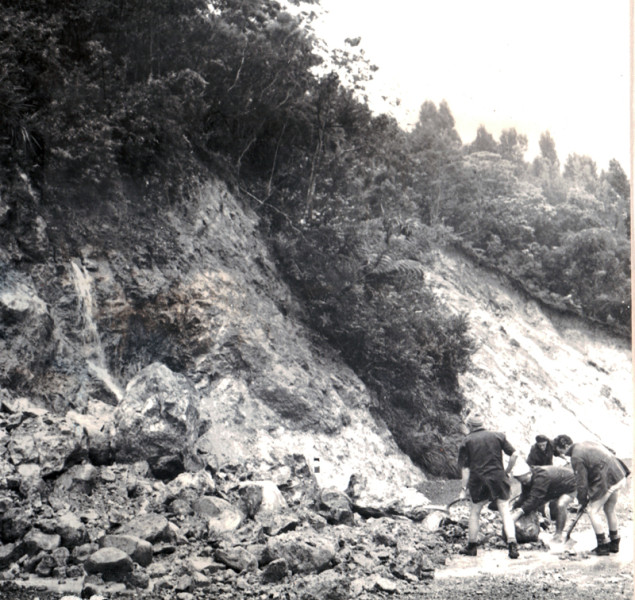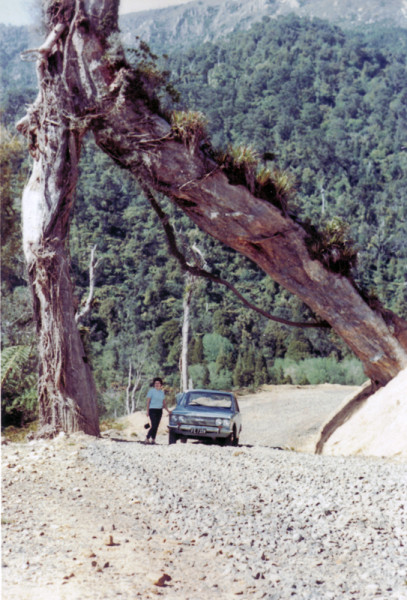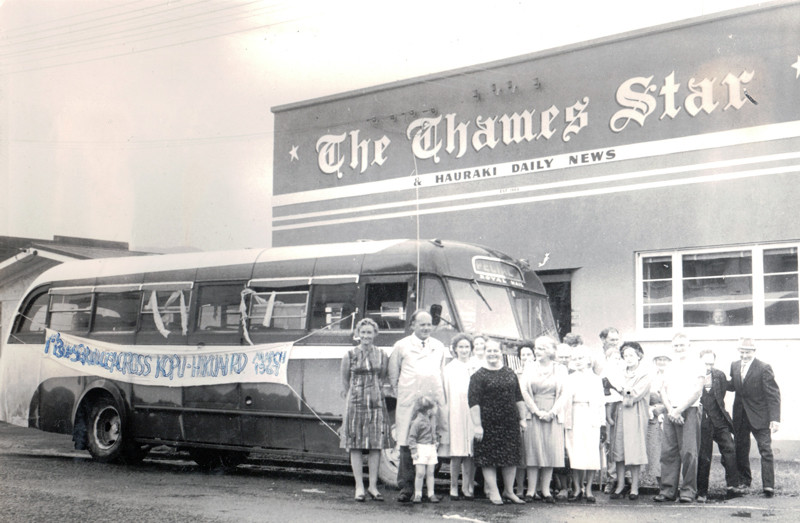Key route across the peninsula
The towns of Tairua and Hikuai were founded on gold, kauri timber and gum.
In the 1800s there was no road connecting the two towns, and those who wanted to travel between the east coast and Thames had to walk or ride over a narrow dirt track.
The origins of State Highway 25A lie in a Māori foot track, which was later used by gold prospectors, gum diggers and bush fellers. The bush was dense and the track was muddy, crossing swampland and steep hills.
A laden four-horse wagon took five hours to travel between Hikuai and Broken Hill mine in the early 1900s – a journey of 10 minutes now.
Locals demanded a better road, and in 1909 Thames County Council engineer A B Wright presented a report outlining two potential routes for a road between Thames and Tairua. One was from Tairua Valley’s Puriri track to Kirikiri Stream, finishing in Kōpū. The alternative route was from Tairua to the Hihi Saddle and down the Kaueranga Valley.
The second option was initially recommended and money granted, but that route never eventuated. Instead, by the 1930s the Kōpū-Hikuai track was in regular use, and received its first coat of metal.
However, the road was notoriously muddy, especially in winter. Hikuai school children rode to school by horseback rather than walk on a road thick with mud. Others traversed paddocks and streams, and then put on socks and shoes at the school gate.
Flooding and slips continued to be a problem in the region. The Tairua River at Hikuai overflowed its banks often, making the road impassable. There was never enough money for the Thames County Council to do necessary maintenance or make improvements. In the late 1940s returned soldiers began to settle on farms at Hikuai, and further pressure was put on the council to provide a road so settlers could have better access to facilities such as Thames Hospital.
In 1953 the Thames Chamber of Commerce and the Mayor, S Ensor, voiced support for the first option in Wright’s 1909 report (a road between Tairua and Kōpū via the Kirikiri Stream).
The National Roads Act 1953 helped get the project going, with the support of the then Minister of Works, W S Goosman, MP for Piako. The National Roads Board gave an estimated £5000 for an exploratory survey by engineer M Lancaster in 1957. After studying the survey and aerial photos, the decision was made to concentrate on a route up the Kirikiri Stream Valley.
Work began in 1958 at the Hikuai end and in 1960 at the Kōpū end. Contractors included Green and McCahill and H Allen Mills Ltd. Some extremely complex earthworks were undertaken, with one cutting 36.5m deep. Millions of tonnes of earth were removed to make the highway.
Working conditions were extremely difficult, a challenge to engineers and contractors. Access was a major problem: about 11km of the road in the centre went through bush on steep slopes. “Tractors had sometimes to be anchored to large trees so that they could winch themselves back up slopes like giant spiders,” said Minister of Works, P B Allen, in the Thames Star.
Finally, on Thursday 23 March 1967, State Highway 25A was officially opened by the Minister of Works, Hon P B Allen. Local Hauraki MP Arthur Kinsella, a strong advocate of the road, also attended. The 29km highway, which included seven bridges, had cost more than one million pounds to build.
The ceremony was held at the summit, in the pouring rain. The heavy rain caused a slip on the road shortly before the opening ceremony, but this was quickly cleared to allow single-lane traffic through.
The road was sealed in 1973, making travel much easier, especially during the winter months.



